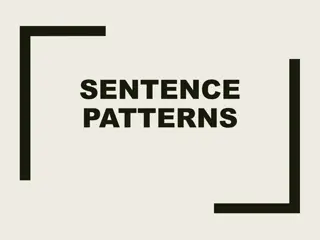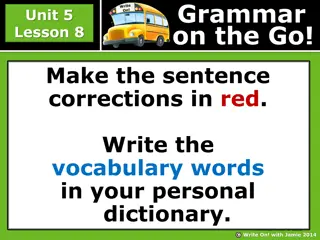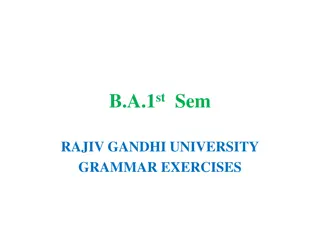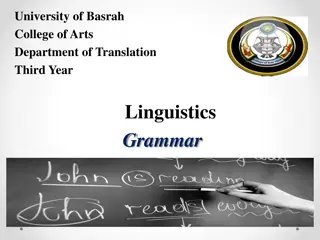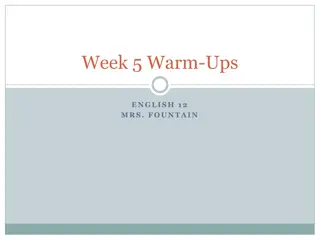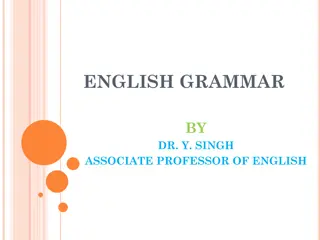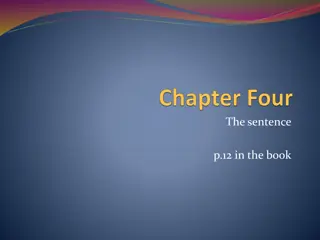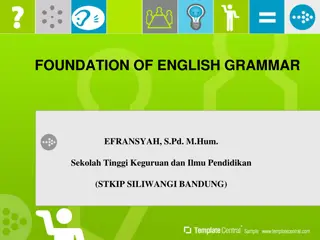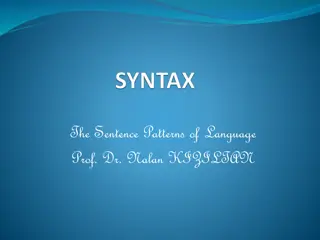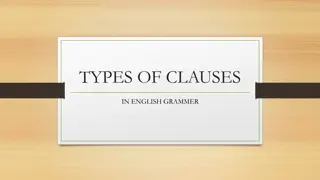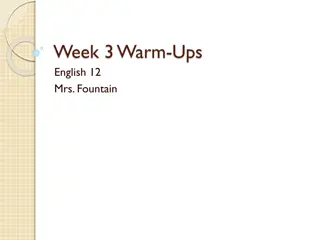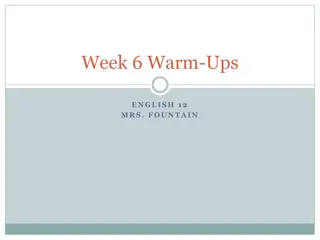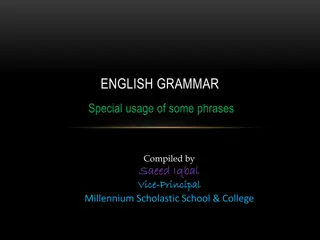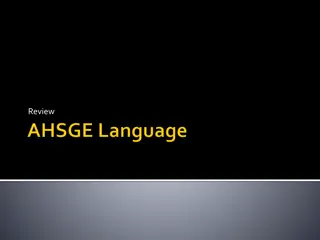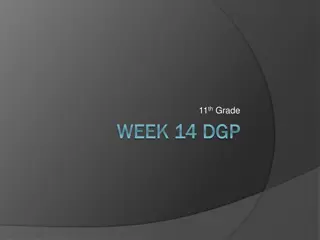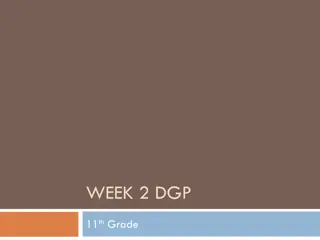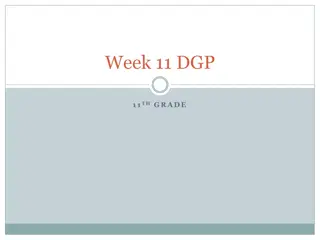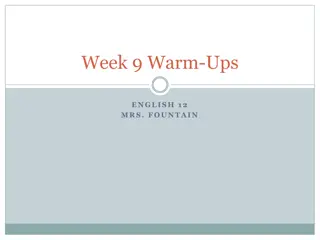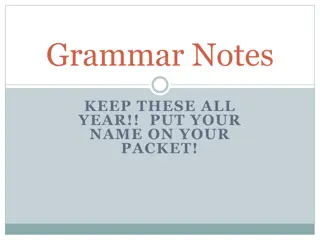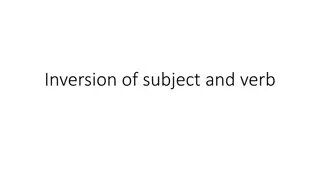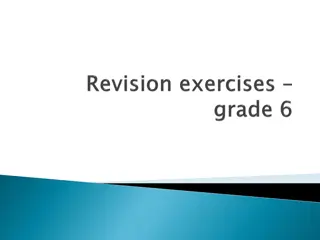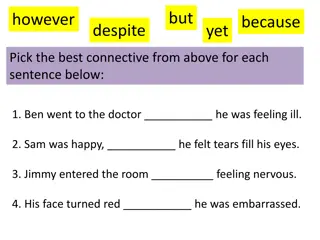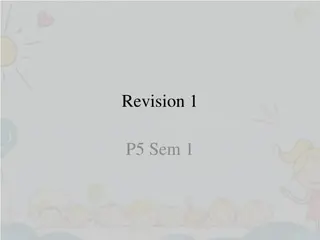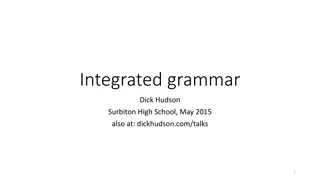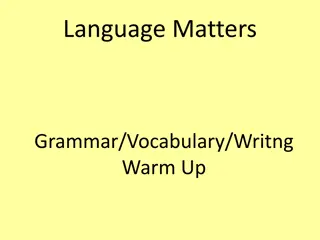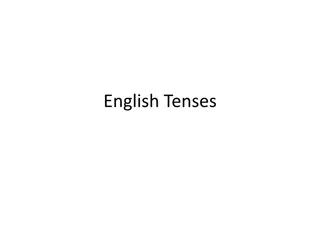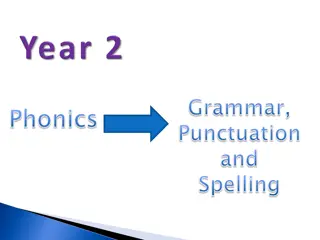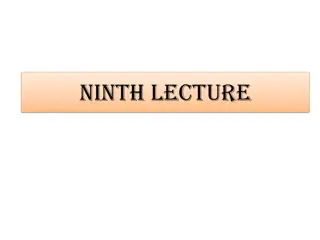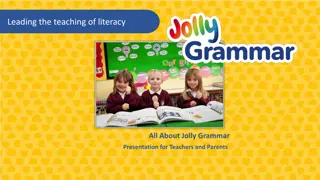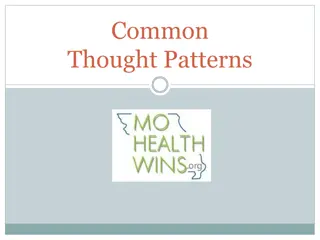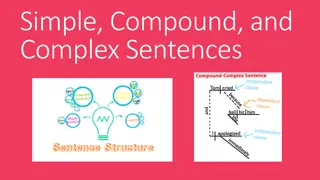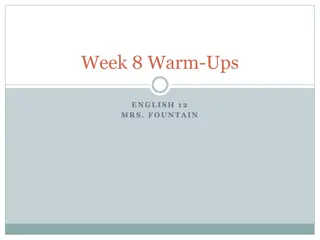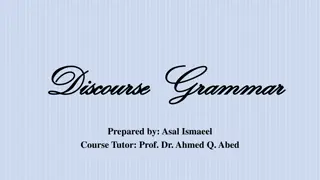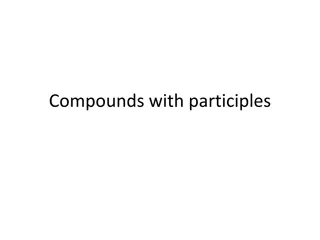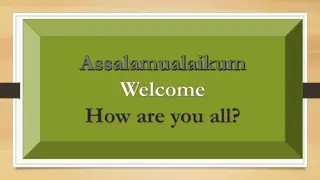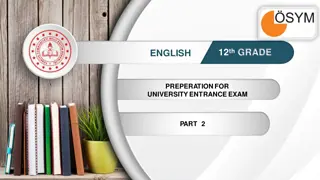Understanding Sentence Patterns in English Grammar
Explore the basics of sentence structure in English grammar, including complete and incomplete sentences, sentence patterns like Subject-Verb (S+V) and Subject-Verb-Object (SVO), the concept of direct objects, and the difference between transitive and intransitive verbs. Enhance your knowledge with examples and visuals to master the fundamentals of constructing sentences effectively.
Download Presentation

Please find below an Image/Link to download the presentation.
The content on the website is provided AS IS for your information and personal use only. It may not be sold, licensed, or shared on other websites without obtaining consent from the author. Download presentation by click this link. If you encounter any issues during the download, it is possible that the publisher has removed the file from their server.
E N D
Presentation Transcript
Identity KHITISH SARKER ASSISTANT TEACHER KRISHNAGOBINDA HIGH SCHOOL, BANGLA, NETRAKONA. Subject: English 2nd paper (grammar) Class: VI--X
Look at the sentences & what have you observed? Kabya ate a box of It s an incomplete sentence. The basketball player is tall. It s a complete sentence.
Our todays topic is Sentence & Sentence pattern, a part of Basic Grammar.
Learning outcomes After studied this lesson, we will be able to identify the definition of sentence.
So, lets get started.. Sentence:- When one or more words are grammatically linked and bring out a complete sense it is called a sentence. 1. The earth revolves around the sun. 2. The cow gives us milk. 3. It is a hot day.
Sentence Patterns-- The first pattern is the most Basic one Subject+ Verb (S+V) Example: We relaxed. Remember that, a verb is a word used to describe an action or a state it comes from the Latin word Verbum. Here some longer Example this pattern I haven t been practicing. Rana and his friends are going to be performing.
The second pattern adds one more elements SVO + + Direct object Subject Example: Some verbs take a object. We called these Transitive Verb. Verb Object They played music.
Direct object: Object of verb someone or something is acting appoint the object or performing on the object. Example: They played music. Played what? music.
Can any verb have an object? No So, we called the first pattern there is no object. Example: We relaxed. Some verbs don t have an object. They don t need one. We called these intransitive verb.
Transitive verb SVO Intransitive verb SV Transitive verb have an object. SV The children's are playing. SVO The children's are played a game.
Are direct objects always nouns? They re anything that behaves like a noun. Here is a quick note on objects. Objects or noun or anything the behaves like a Nouns Pronouns Gerunds Clauses
SVA SV SVO SVOA can add on one more unit called- Adverbial. Both sentences Adverbial Adds information Adverbial adds information ends a questions like .. Where? When? Why? How? Which include other how questions like How long? How much?
So, our first pattern S +V S + V + A can be come Example: The children played in the sand. in the sand. Where? Second pattern SVO Can be come--SVOA Example:They sang songs last night. When? last night.
We can have more than one adverbial in a sentence and adverbials owned always final position. SVOAA Example: They sang songs on the beach last night. How many adverbials above sentence? Two Where? on the beach When? last night.
Watch the reviewed ASVOA Example: Last night they sang songs on the beach. When we start using more than one adverbial in a sentence they usually follow and coder. Manner Place Time Time is the goes last. Be careful not to make your sentences too long and too wordy!
What we understand? Some adverbials are necessary. Some are optional. Look at the some examples:- SVA SVOA I put my name on the waiting list. Mita and her two roommates live there The party lasted till dawn. With this sentences make sense accurate without three adverbials? .. No All three are necessary.
Now look at the next two examples:- SVA SVOA People danced (all night long). I d like private lesson (with Hasan). These are establish full meanings without two adverbials. So, this adverbials could be omitted.
The basic patterns are------ Subject+ Verb+ complement Complement gives more information about either the subject or the object. Example: Today was fun. SVCA Today was fun as usual. How do we know when to use a complement? We talked about transitive and intransitive verbs. There are another group of verbs we need to talk about--------- SVC
Linking verbs Let s talk about Linking Verbs .. Linking verbs link or connect the subject to an idea called the complement. We need the complement to fully understand the subject. SVC For Example: She s an artist. You seem confused. Subject + Verb + Complement Subject complement We need this She s what? You seem what? Complements are very often Nouns/Adjectives. an artist confused
Here is the common list of linking verbs. Appear Be Become Feel Look Seem Sound taste
Linking verbs SVC Subject + Verb + Complement After this linking verbs we usually say a noun phrase or adjective phrase but adverbs and prepositional phrases also fit this pattern. Example: She s up stairs. She s in her studio. Just remember that Basic pattern Subject + linking verb + more information about the Subject. That information is necessary. So, we always need more information about the subject after a linking verb.
Are there other kinds of complements we should know about? Yes. Subject complements are only one type of complement. Let me, quickly show you another. Look at this example---- She was excited about the party. What s the party does this follow She was excited. SVC Subject+linking verb +subject complement S + V + complement, here excited is an adjective, is the subject complement. the adjective. It is an adjective complement. So, our sentence is now.. about the party is information that explains for excitement, it explains SVCC
What about sentences with indirect object? Let s look at those next. Fourth sentence patterns are four parts. SVOO Subject + verb + first is indirect object + 2nd is the direct object. Its will be clear when we see an example . Indirect object often follow a preposition. Example: I tell secrets to my friends. I sing songs for the children.
The basic pattern is SVOO We can add SVOOA Look at these two examples: 1. We showed our cousins a really good time last weekend. Here, we subject showed verb our cousins indirect object a really good time direct object. last night adverbial 2. Last weekend we showed our cousins a good time. Here, we have the adverbial at the beginning.
SV SVO SVC SVOO . is there another pattern to learn? Yes. Here comes the last one! We talked about the subject complements and adjective complement directly after an adjective. Get ready .. The fifth sentence pattern. SVOC Subject + verb + object + object complement. Here is an example: I consider that the best trip ever. is the object complement
Example: I consider that the best trip ever. The best trip ever is the object complement. It explain and define the object. I need that fully understand I consider that .. To be what? the best trip ever. Some sentences require an adjective complement like this one. Here s a similar example: We consider him family. Consider him. To be what? We consider him family.
Here is the nice example: You make each day special. You make each day what? ..special. We need the adjective, we need the word as the object complement to explain the object. What can I do with all this knowledge about sentence patterns? Start applying it! I want to show you the power of this knowledge. Let s exercise only five sentences.
Find and correct each sentences. I know you can do it. 1. I put on the table. [It s the first sentence what's wrong with that.] Here put is a transitive verb, its need an object. You put what on the table? The sentence pattern should be --SVOA. Correct sentence: I put it on the table. I put the vase on the table. Here is the second sentence. 2. This morning, missed the bus. This sentence has no subject. The Basic pattern is ASVO Who missed the bus? This morning, I missed the bus.
3rd sentence is----- 3. Music a beautiful art form. This sentence is missing a verb A linking verb Pattern is ----- SVC Lets put in a verb music is a beautiful form, Look at the fourth sentence:- 4. I sent to her a thank you note. This sentence has two objects. In the correct order---- {s + v+ indirect object first (drop preposition) then direct object.} Sentence pattern is---SVOO
Heres the fifth sentence:- 5. This whole experience has made a better person in me. Sentence pattern is----- SVOC Has made me -------what? a better person. Correct sentence is: This whole experience has made me a better person. Remember that the five Basic Sentence Patterns. SV SVO SVC SVOO SVOC


